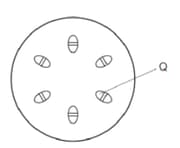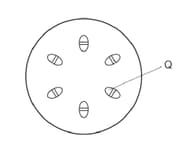Plant Tissues
Plant Tissues: Overview
This topic covers concepts, such as, Plant Tissues, Meristems, Chlorenchyma & Aerenchyma etc.
Important Questions on Plant Tissues
Which of the following part of the cell is made up of cellulose?
Fill in the blank with the correct answer from the bracket.
_____ is the most abundant organic compound on Earth. (Carbohydrate, Glucose, Cellulose, Pectin)
The pericycle is located between the epidermis and endodermis of the stem.
Fill in the blank with the correct answer from the bracket.
The region of stem lies between the epidermis and the endodermis is called _____. (cuticle, xylem, cortex, pericycle)
Xylem fibres are collenchyma cells that provide mechanical support to the xylem.
Xylem fibres help in the transportation of food and nutrients from leaves to other parts of the plant.
The meristematic tissues involved in the lateral growth and their continued production of the new phloem and xylem.
_____ is responsible for the secondary growth of plants.
An increase in the diameter results from the activity of the vascular cambium and the cork cambium.
The diagram shows a cross-section of a plant stem. Part Q shows _____.

Draw a well-labeled diagram with various cells and their arrangements.
The diagram shows a cross-section of a plant stem. Part Q shows the phloem.

The diagram shows a cross-section of a plant stem. Q shows the part of?

